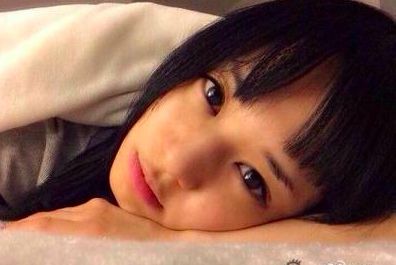一、简介
< < <<一个UITabBarController只有一个TabBar。 <<继承关系:UITabBar --> UIView -->UIResponder-->NSObject 格式为 1--> 设置item位置的样式(属性的作用) typedef NS_ENUM(NSInteger, UITabBarItemPositioning) { UITabBarItemPositioningAutomatic, UITabBarItemPositioningFill, UITabBarItemPositioningCentered, } NS_ENUM_AVAILABLE_IOS(7_0);(如果属性有枚举类型的话,这里会有枚举类型说明 tabBar.itemPositioning = UITabBarItemPositioningCentered;(这是具体的例子) @property(nonatomic) UITabBarItemPositioning itemPositioning NS_AVAILABLE_IOS(7_0) UI_APPEARANCE_SELECTOR __TVOS_PROHIBITED;(这是属性的说明) 二、UITabBar的属性(属性的顺序与苹果API一致) 1-->声明UITabBarDelegate代理 tabBar .delegate = self;//声明代理 @property(nullable, nonatomic, weak) id 三、UITabBar的标签属性 1-->设置标签 tabBar.items = itemsArray。 @property(nullable, nonatomic, copy) NSArray 2--> 设置选中的标签 tabBar.selectedItem = tabBarItemArray; // 设置tabBarItem为选中的标签 @property(nullable, nonatomic, weak) UITabBarItem *selectedItem; //显示基于模式的反馈。默认为空 3-> 设置标签与动画显示 [tabBarController.tabBar setItems:tabBarItemArray animated:YES]; - (void)setItems:(nullable NSArray *)items animated:(BOOL)animated; 四、UITabBar的自定义标签顺序属性(注意使用UI TabBarController时不能使用此方法,自定义时使用) 1-->设置自定义标签 [tabBar beginCustomizingItems:@[item1, item3, item2]];//让用户自定义items的布局,系统会自动弹出一个带有Done按钮的视图 - (void)beginCustomizingItems:(NSArray *)items __TVOS_PROHIBITED; //重新排序。这将显示一个包含所有条目的表单,允许用户更改/重新排序项目,并在顶部显示一个“Done”按钮。列出所有可以重新排序的项目。总是把一张纸动起来。未列出的可见项是固定的。 2-->完成标签布局 这个方法博主是在找不到具体怎么调用的,只能贴出苹果官方API-endCustomizingAnimated。希望有人知道的能告诉一下,来张老师的图以安慰自己。 - (BOOL)endCustomizingAnimated:(BOOL)animated __TVOS_PROHIBITED; 3-->是否正在自定义标签布局 BOOL customizing=imageView.customizing; //获取旋转状态 #if UIKIT_DEFINE_AS_PROPERTIES//UIKIT定义的属性 @property(nonatomic, readonly, getter=isCustomizing) BOOL customizing __TVOS_PROHIBITED; #else - (BOOL)isCustomizing __TVOS_PROHIBITED; #endif 五、UITabBar的颜色属性 1-->设置渲染颜色,会影响选中字体和图案的渲染 tabBar.tintColor=[UIColor redColor]; @property(null_resettable, nonatomic, strong) UIColor *tintColor NS_AVAILABLE_IOS(5_0);//tintColor是通过superview层次结构继承的 2--> 设置导航栏的颜色 tabBar.barTintColor = [UIColor whiteColor]; @property(nullable, nonatomic, strong) UIColor *barTintColor NS_AVAILABLE_IOS(7_0) UI_APPEARANCE_SELECTOR;// barTintColor会影响背景颜色, iOS7出现的新属性,用来代替tintColor的作用 3-->未选中的Item的颜色 IOS10可用 tabBar.unselectedItemTintColor = [UIColor redColor]; @property (nonatomic, readwrite, copy, nullable) UIColor *unselectedItemTintColor NS_AVAILABLE_IOS(10_0) UI_APPEARANCE_SELECTOR;//在这个标签栏中未选中的项将被着色为这个颜色。将这个值设置为nil表明UITabBar应该使用它的默认值。 4-->选中的Item的Image颜色 tabBar.selectedImageTintColor = [UIColor redColor]; @property(nullable, nonatomic, strong) UIColor *selectedImageTintColor NS_DEPRECATED_IOS(5_0,8_0,"Use tintColor") UI_APPEARANCE_SELECTOR __TVOS_PROHIBITED;//弃用属性,被tintColor代替 六、UITabBar的背景图案属性 1-->设置导航栏背景图案 [[UITabBar appearance] setBackgroundImage:[UIImage imageNamed:@"tabBarBackgroundImage"]]; @property(nullable, nonatomic, strong) UIImage *backgroundImage NS_AVAILABLE_IOS(5_0) UI_APPEARANCE_SELECTOR;//即使不是通过UIImage resizableImage方法创建的,背景图像也会被修改。 2--> 设置选中一个标签时,标签背后的选中提示图案 这个会出现在设置的item图案的后面 tabBar.selectionIndicatorImage=[UIImage imageNamed:@"tabBarBackgroundImage"]; @property(nullable, nonatomic, strong) UIImage *selectionIndicatorImage NS_AVAILABLE_IOS(5_0) UI_APPEARANCE_SELECTOR; 3-->设置阴影的背景图案 [[UITabBarappearance] setShadowImage:[UIImagenew]]; @property(nullable, nonatomic, strong) UIImage *shadowImage NS_AVAILABLE_IOS(6_0) UI_APPEARANCE_SELECTOR;//默认是nil。当非nil时,自定义阴影图像来显示而不是默认阴影图像。对于要显示的自定义阴影,还必须设置自定义背景图像(如果使用默认背景图像,则使用默认的阴影图像)。 七、UITabBar的背景图案属性 1-->设置标签item的位置模式 //枚举如下 typedef NS_ENUM(NSInteger, UITabBarItemPositioning) { UITabBarItemPositioningAutomatic,//自动 UITabBarItemPositioningFill,//充满 UITabBarItemPositioningCentered,//中心 } NS_ENUM_AVAILABLE_IOS(7_0); [UITabBar appearance].itemPositioning=UITabBarItemPositioningCentered; @property(nonatomic) UITabBarItemPositioning itemPositioning NS_AVAILABLE_IOS(7_0) UI_APPEARANCE_SELECTOR __TVOS_PROHIBITED;//默认是UITabBarItemPositioningAutomatic。标签栏项是水平填充的 2-->设置item宽度 [UITabBar appearance].itemWidth=50; @property(nonatomic) CGFloat itemWidth NS_AVAILABLE_IOS(7_0) UI_APPEARANCE_SELECTOR;//设置值为0或小于0的值将被解释为系统定义的宽度 3-->item间隙 [UITabBar appearance].itemSpacing=5; @property(nonatomic) CGFloat itemSpacing NS_AVAILABLE_IOS(7_0) UI_APPEARANCE_SELECTOR;//设置值为0或小于0的值将被解释为系统定义的间隔 4-->设置标签栏风格,默认高度49 typedef NS_ENUM(NSInteger, UIBarStyle) { UIBarStyleDefault = 0,//默认样式 UIBarStyleBlack = 1,//黑色 UIBarStyleBlackOpaque = 1, // 弃用属性 UIBarStyleBlackTranslucent = 2, // 弃用属性 } __TVOS_PROHIBITED; tabBar.barStyle =UIBarStyleBlack; @property(nonatomic) UIBarStyle barStyle NS_AVAILABLE_IOS(7_0) UI_APPEARANCE_SELECTOR __TVOS_PROHIBITED;//UIBarStyleDefault和UIBarStyleBlack来定义UINavigationBar样式,并且用setTranslucent:方法来设置透明与否 4-->设置item是否透明 [UITabBar appearance].translucent =NO; @property(nonatomic,getter=isTranslucent) BOOL translucent NS_AVAILABLE_IOS(7_0);//设置tabBar的半透明属性translucent设置为NO,默认为YES,若保留半透明效果,设置的颜色会与正常的颜色有色差 八、UITabBar的UITabBarDelegate 1、用户选中某个UITabBarItem - (void)tabBar:(UITabBar*)tabBar didSelectItem:(UITabBarItem*)item{ // 判断本次点击的UITabBarItem是否和上次的一样 if(item ==self.lastItem) { // 一样就发出通知 [[NSNotificationCenterdefaultCenter] postNotificationName:@"LLTabBarDidClickNotification"object:niluserInfo:nil]; } // 将这次点击的UITabBarItem赋值给属性 self.lastItem = item; } - (void)tabBar:(UITabBar*)tabBar didSelectItem:(UITabBarItem*)item;//用户选择新视图时调用 标注:以下四个代理方法是当Items>=6个时,当进入More页面时,开始或结束Item编辑状态的相关回调 2、将要开始编辑标签时 - (void)tabBar:(UITabBar*)tabBar willBeginCustomizingItems:(NSArray *)items{ NSLog(@"将要开始自定制item"); } - (void)tabBar:(UITabBar *)tabBar willBeginCustomizingItems:(NSArray *)items __TVOS_PROHIBITED; //在自定义表显示之前调用。标签是标签项目列表 3、已经开始编辑标签时 - (void)tabBar:(UITabBar*)tabBar didBeginCustomizingItems:(NSArray *)items{ NSLog(@"已经开始自定制item"); } - (void)tabBar:(UITabBar *)tabBar didBeginCustomizingItems:(NSArray *)items __TVOS_PROHIBITED; // 自定义表显示后调用。标签是标签项目列表 4、将要结束自定制item - (void)tabBar:(UITabBar*)tabBar willEndCustomizingItems:(NSArray *)items changed:(BOOL)changed { NSLog(@"将要结束自定制item"); } - (void)tabBar:(UITabBar *)tabBar willEndCustomizingItems:(NSArray *)items changed:(BOOL)changed __TVOS_PROHIBITED; //在自定义表隐藏之前调用。标签是标签项目列表。 5、已经结束自定制item - (void)tabBar:(UITabBar*)tabBar didEndCustomizingItems:(NSArray *)items changed:(BOOL)changed{ NSLog(@"将要结束自定制item"); } - (void)tabBar:(UITabBar *)tabBar didEndCustomizingItems:(NSArray *)items changed:(BOOL)changed __TVOS_PROHIBITED; //自定义表被隐藏后调用。标签是标签项目列表。 参考 iOS开发中 UITabBarController--标签控制器的使用 UINavigationBar-使用总结 iOS开发中 UITabBarController--标签控制器的使用 [ios]tabbar超过5个后出现的more标签文字修改 以及more、configure界面 修改问题 iOS Tabbar各种定制
